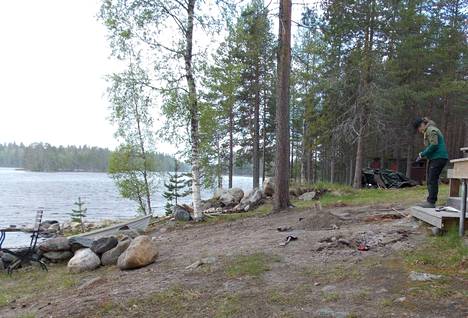According to the Finnish Museum Agency, the discovery is one of the most significant artefact discoveries of this millennium. It will be open to the public in Hämeenlinna in June.
from Kuusamo, a very rare archaeological discovery was made on the beach of the summer house in May. The couple found the hammer part of an elk head ax on their cottage beach, which is estimated to be from the end of the Stone Age, about 4,000 years ago.
According to the Museum Agency, the previous similar finds were more than a hundred years ago in South Karelia’s Säkkijärvi and Satakunta in Huittis.
Amanuensis of the Museum Office Sami Raninen assesses in the announcement that Kuusamo’s elk head is one of the most significant artefact discoveries of this millennium.
According to the agency, a elk head is the hammer side of a stone ax used as a ritual or status item, i.e. the edge against the blade. It weighs a good 300 grams and is just under 20 centimeters long.
According to the Finnish Museum Agency, the exact stone type of the elk head found in Kuusamo will be determined in further research.
Museum Agency considers it possible that the moose found in Kuusamo could even be made by the same stonemason as the moose in Säkkijärvi, even though the places where the objects were found are hundreds of kilometers apart.
The connection of the objects to each other can be clarified in further studies, where the details of the Kuusamo find, such as the type of stone and the place of manufacture, are clarified.
The moose heads of Kuusamo and Säkkijärvi are estimated to be dated to the 21st century or the beginning of the 11th century, before the start of the countdown. At that time, southwestern and southern Finland already lived in a culture that supported small animal husbandry, but in the east and north they still lived in a hunting and fishing economy.
According to the Museum Agency, the hammer axes of small herders were probably prototypes of elk and bear head axes, which hunter-fisherman communities began to make.

A moose head found in Säkkijärvi more than a hundred years ago. According to the Finnish Museum Agency, the elk heads from Kuusamo and Säkkijärvi resemble each other so closely that they are probably objects from the same era.
The Museum of North Ostrobothnia has inspected the site where Kuusamo’s elk head was found and found indications of a solid ancient relic. Further investigations at the discovery site have not yet been decided.
The Hirvenpää ax will be on display to the public at the Royal Forests exhibition opening on June 16 in Häme Castle of the National Museum of Finland. The exhibition is open until January 2024.

The Hirvenpää ax was found when the couple cleared rocks from their cottage beach in Kuusamo in May. In the photo, archaeologist Matleena Riutankoski is documenting the discovery site.
